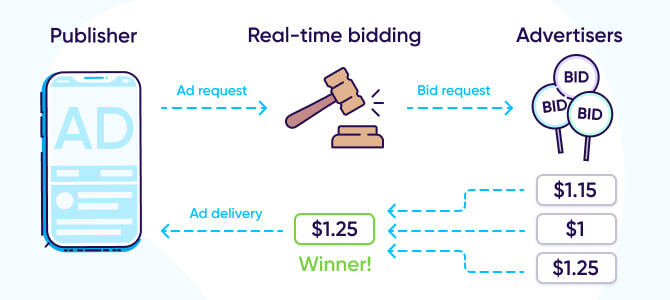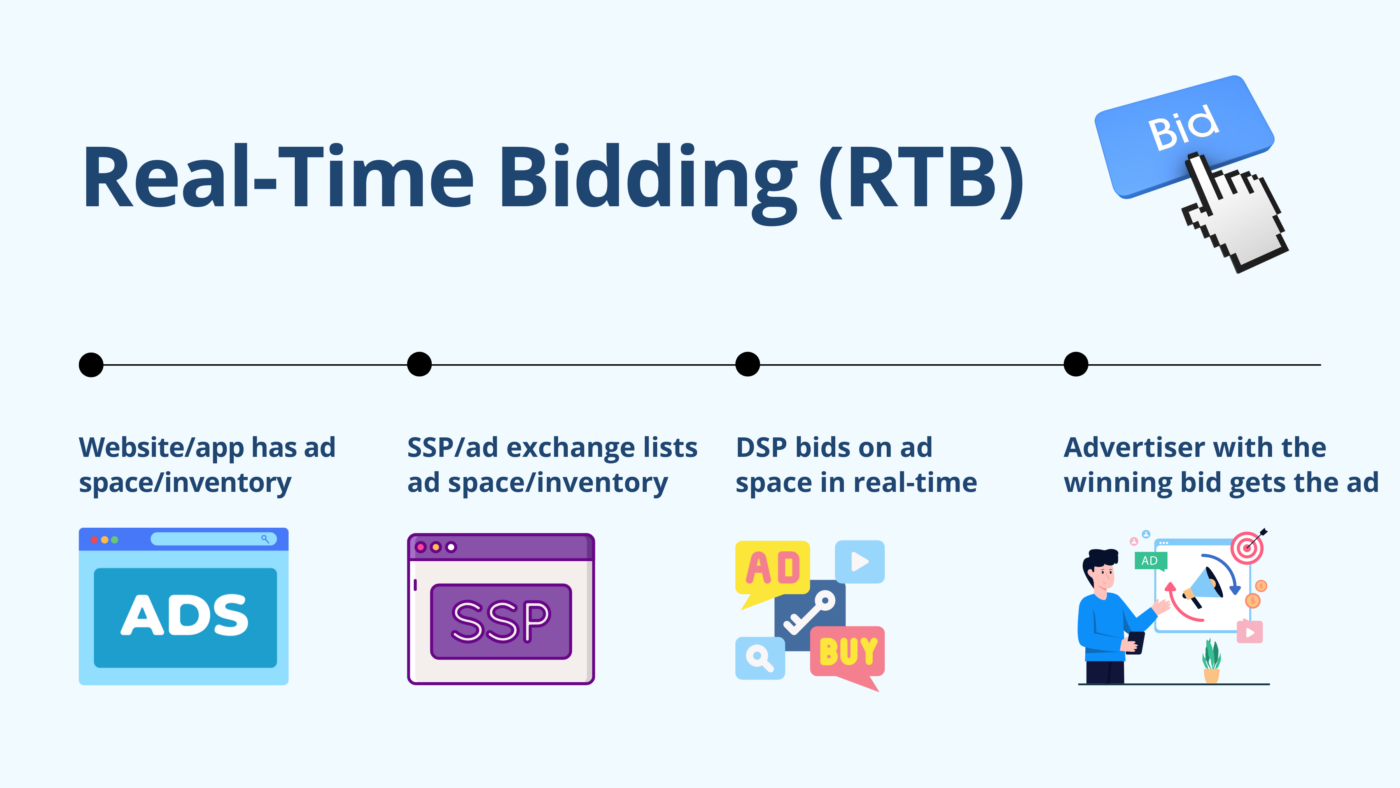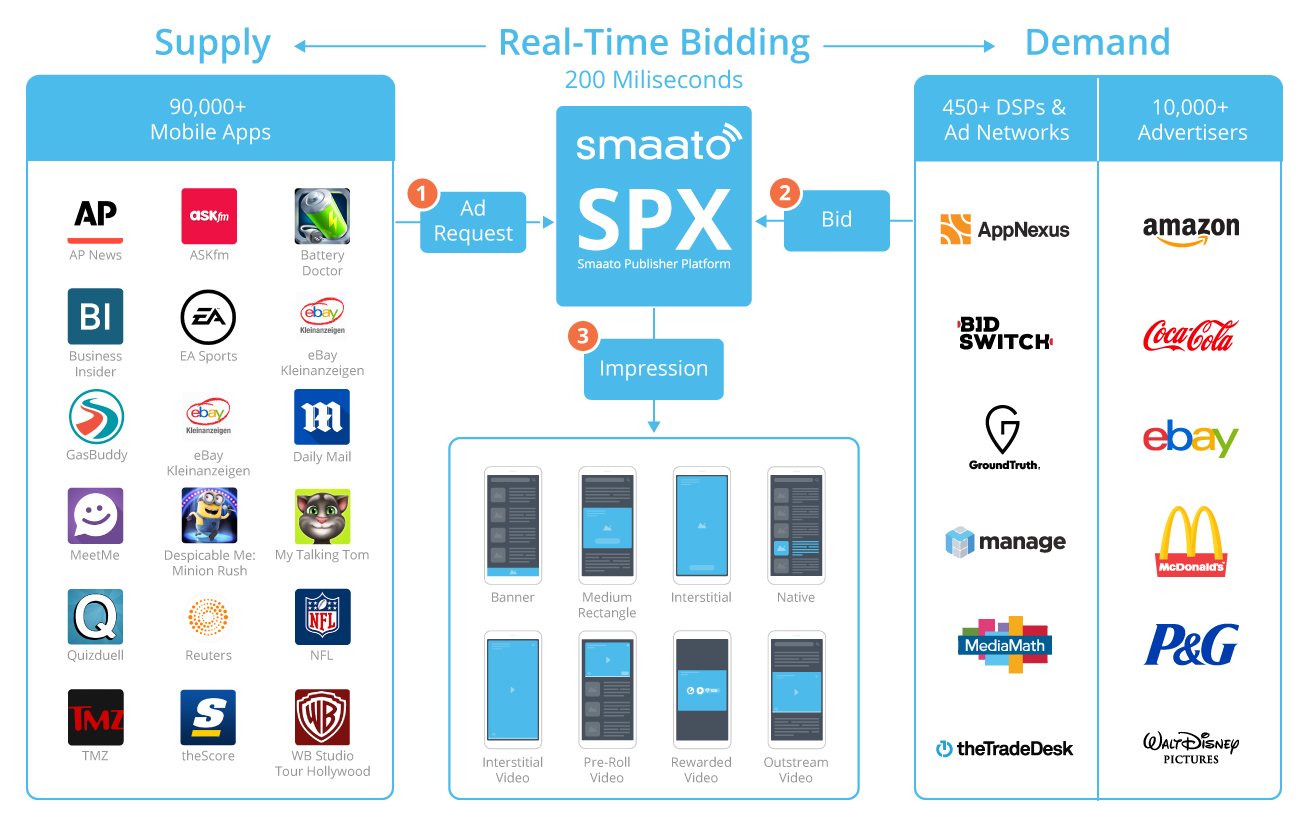In todays fast-paced digital advertising ecosystem, Real-Time Bidding (RTB) has emerged as one of the most efficient, transparent, and data-driven methods for advertisers to purchase ad space. RTB allows advertisers to bid on digital ad inventory in real time, ensuring that the right message reaches the right audience at the right time. But how exactly does RTB work? In this article, well explore the intricacies of the RTB process, its key components, benefits, challenges, and best practices.

What is Real-Time Bidding (RTB)?
Real-Time Bidding (RTB) is a digital advertising technique that allows advertisers to bid on individual ad impressions in real time through an auction-based system. This process happens almost instantaneously whenever a user visits a website that has available ad inventory.
Rather than purchasing ad space in bulk or through pre-negotiated deals, advertisers can participate in real-time auctions, placing bids for the chance to show their ads to specific users. RTB is part of the larger programmatic advertising ecosystem, which involves automating the buying and selling of digital ad inventory using technology.
The RTB Auction Process
RTB auctions occur in milliseconds and follow a highly structured process:
- User Visits a Website: When a user navigates to a website, the site sends a request for available ad space to an Ad Exchange.
- Request Sent to DSPs: The Ad Exchange sends the ad space request to multiple Demand-Side Platforms (DSPs). DSPs represent advertisers and allow them to bid on the inventory. The request includes valuable information about the user, such as their location, device, and browsing behavior.
- Advertisers Bid: Advertisers, through their DSPs, analyze the data and place bids for the ad impression. They assess factors like audience targeting, the users behavior, and the estimated value of the impression to determine their bid.
- Auction Takes Place: The Ad Exchange conducts an auction with all the bids placed by the DSPs. The highest bidder wins the ad impression.
- Ad Displayed: The winning ad is then immediately displayed to the user on the website they are visiting.

Key Components of Real-Time Bidding
To understand how RTB works fully, its essential to break down the key players involved in the process.
- Advertisers and Agencies: These are the companies looking to promote their products or services. They are the ones placing the bids on ad inventory through DSPs.
- Demand-Side Platforms (DSPs): DSPs are tools that allow advertisers to automate the process of buying ad inventory. They analyze data from websites, users, and other sources to make informed bids in RTB auctions.
- Supply-Side Platforms (SSPs): SSPs help website publishers manage and sell their ad inventory. They send ad space availability to Ad Exchanges and help maximize the revenue for publishers by connecting them with the highest bidding advertisers.
- Ad Exchanges: An Ad Exchange is a marketplace where DSPs (advertisers) and SSPs (publishers) meet to buy and sell ad inventory. It facilitates the real-time auction process and ensures a smooth transaction between both sides.
- Publishers: These are the website owners or app developers who offer ad space for auction. They rely on SSPs to connect with potential buyers (advertisers) and maximize the value of their inventory.
- Ad Networks: These platforms aggregate ad inventory from multiple publishers and sell it to advertisers. Although not directly involved in RTB, they often facilitate the process by helping connect demand and supply.
The Speed of RTB: A Millisecond Advantage
One of the most remarkable aspects of RTB is the speed at which it happens. When a user loads a webpage, the entire auction and bidding process occurs in under 100 milliseconds. This means that the ad is selected, auctioned, and displayed almost instantaneously, providing a seamless and efficient user experience.
This speed is critical in digital advertising, as it allows advertisers to respond to changes in user behavior in real time. For instance, if an advertiser has a time-sensitive offer, they can adjust their bid in milliseconds to target the right audience at the right moment.
The Benefits of Real-Time Bidding
RTB offers numerous advantages over traditional forms of digital advertising. Here are some of the primary benefits:
1. Granular Audience Targeting
With RTB, advertisers can bid on specific impressions based on detailed user data, such as:
- Demographics (age, gender, location)
- Behavioral Data (interests, online activity)
- Contextual Targeting (content on the page)
This means that advertisers can ensure their ads are seen by the most relevant users, increasing the chances of conversions and reducing wasted impressions.
2. Cost Efficiency
Because RTB is auction-based, advertisers only pay for the impressions that are most valuable to them. This ensures a cost-per-impression (CPM) model where advertisers bid based on the users likelihood of engaging with the ad, making the entire process more cost-efficient.
3. Real-Time Optimization
RTB allows for continuous campaign optimization. Advertisers can adjust their bids, ad creatives, and targeting strategies on the fly based on real-time performance metrics. This ensures that campaigns are always running at peak efficiency.
4. Transparency
Unlike traditional ad buying, RTB offers transparency for both advertisers and publishers. Advertisers can see exactly where their ads are being displayed, and publishers can view the revenue they are generating from each impression. This transparency helps build trust and ensures that both parties are getting value from the process.
5. Scalability
RTB allows advertisers to scale campaigns quickly. Since the bidding process is automated and can handle large volumes of impressions, advertisers can bid for multiple ad slots across various websites, ensuring broad reach and high campaign scalability.

The Challenges of RTB
While RTB offers several advantages, there are also some challenges to consider:
1. Ad Fraud
RTB is susceptible to various types of fraud, including click fraud and ad stacking, where fraudulent activities can lead to wasted ad spend. Advertisers must take steps to verify the quality of the traffic and ensure their budgets are spent wisely.
2. Privacy Concerns
With increasing concerns over user privacy, particularly with regulations like the GDPR and CCPA, advertisers must be cautious when collecting and using personal data. Compliance with these regulations is essential to avoid fines and penalties.
3. Complexity for Newcomers
The RTB ecosystem can be complex, especially for advertisers who are new to programmatic buying. With numerous platforms, technologies, and bidding strategies to manage, the learning curve can be steep. However, DSPs and other platforms are continuously improving user interfaces to simplify the process.
4. Viewability Issues
While RTB offers a lot of targeting precision, some ads may not always be seen by users. This issue, known as ad viewability, occurs when ads are served in areas of a website that users do not interact with. Publishers and advertisers need to work together to optimize ad placement.
Best Practices for Success in RTB
To ensure the success of your RTB campaigns, follow these best practices:
1. Leverage Advanced Targeting
Use advanced data segmentation to ensure your ads are shown to the most relevant audience. Consider factors such as location, device, and time of day to optimize performance.
2. Monitor and Optimize Campaigns
Constantly monitor your RTB campaigns and make adjustments in real time. Optimize bidding strategies, targeting options, and ad creatives based on performance data to ensure maximum efficiency.
3. A/B Test Ads
Experiment with different ad creatives and formats. A/B testing can help you identify which versions of your ads resonate best with your target audience.
4. Use Viewability Tools
Ensure that your ads are actually being seen by users by using viewability measurement tools. These tools track how many ads were in view for how long and can help optimize placements.
5. Ensure Compliance
Stay compliant with privacy regulations like GDPR and CCPA to avoid penalties. Make sure that youre collecting data ethically and transparently.
FAQ about Real-Time Bidding
Q1: How long does an RTB auction take?
- The RTB auction takes place in millisecondsso fast that users usually dont notice any delay in page load times.
Q2: Can RTB be used for mobile advertising?
- Yes, RTB is widely used in mobile advertising. Advertisers can bid on mobile ad inventory and target users based on their behavior, device, and location.
Q3: What is the difference between RTB and programmatic advertising?
- RTB is a specific type of programmatic advertising. While programmatic refers to any automated ad buying process, RTB involves real-time auctions for ad impressions.
Q4: How do I start using RTB for my campaigns?
- To get started, you need to set up an account with a Demand-Side Platform (DSP), create your ad creatives, and configure your targeting parameters. Once thats done, you can begin bidding on available inventory.
Conclusion
Real-Time Bidding (RTB) is a powerful tool that has transformed the digital advertising landscape. It provides advertisers with a unique opportunity to buy ad impressions in real time, making advertising more efficient, targeted, and transparent. While there are challenges like fraud and privacy concerns, the benefits far outweigh the risks if approached strategically.
By leveraging RTB, advertisers can improve targeting, optimize ad spend, and maximize ROI. If youre not already utilizing RTB in your advertising strategy, its time to explore this powerful tool and unlock its potential for your business.
